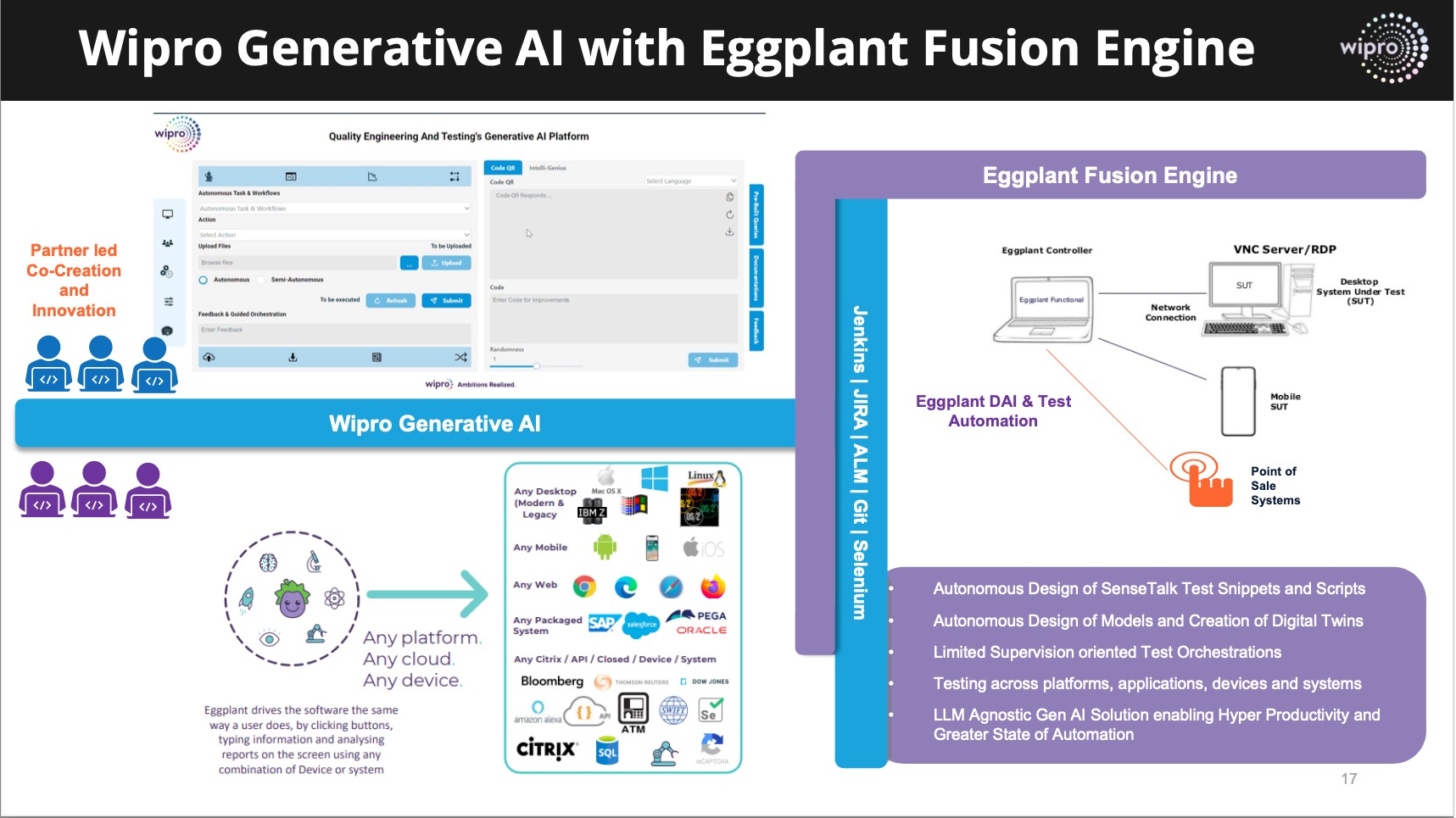The advanced use of GAI - Keysight Technologies shows the way
Published:
Content Copyright © 2023 Bloor. All Rights Reserved.
Also posted on: Bloor blogs

Keysight Technologies is a grandchild of Hewlett-Packard. Hewlett-Packard begat Agilent Technologies, and Agilent begat Keysight. Keysight thus came into the world in 2014 and has grown healthily ever since – to become the dominant business in its field. It has annual revenues of $5.42 bn (for 2012) and average annual revenue growth of 8.7% since it was born. Its customers include the likes of Apple, BAE Systems, Lockheed Martin and Raytheon.
You can think of it as being in the electronic measurement, design and testing business. It is thus a specialised tools business with diverse products and services: electronic design automation (EDA) software, software-defined radio (SDR) platforms, network emulation solutions, test equipment and custom measurement solutions.
It stands at the leading edge of many technology areas, so you will not be surprised to learn that it makes extensive use of all species of AI and Machine Learning and that it was an early adopter of GAI. However, you might be surprised at the extent of its application of GAI.
Keysight’s use of GAI
Keysight’s use of GAI is far in advance of most companies. For example, some of its “mundane” GAI applications include:
- Customer support, including providing chatbots to respond to customer questions and requests for assistance.
- Marketing, where Keysight collects data about its prospects and customers, their activities and their interests and then uses the knowledge gained to target its marketing campaigns more effectively.
- Sales, where Keysight uses GAI to analyse prospect data, identify potential customers and generate leads.
More impressively, Keysight has partnered with Wipro Generative AI to help develop new product features and capabilities and improve both performance and reliability. It has been using GAI to develop and enhance AI-powered tools that help engineers and scientists design and test electronic products more efficiently.
It’s worth noting here that Wipro does not sell its generative AI technology directly. Instead, it partners with its customers to embed its generative AI capabilities into their products and services. An interesting example of this is provided by Keysight’s Eggplant Fusion Engine.
The Eggplant Fusion Engine
The Eggplant Fusion Engine is a testing platform that seeks to automate the testing of software applications. It is a non-intrusive testing tool, so, in operation, it does not require access to source code. This makes it ideal in many testing contexts, including, notably, testing secure environments.
The engine uses a “model-based digital twin” testing approach. It creates a virtual representation of the software application being tested. The virtual representation is then used to automate the testing of the application, representing all possible run-time scenarios and traversing all possible user paths. It also tests APIs and other non-UI components of software applications.
The primary benefits are clear:
- Increased test coverage because it covers all paths.
- Reduced testing time and costs because the process is highly automated and can even run in parallel.
- It will catch many defects earlier, hence reducing software lifecycle costs.
- It scales and thus can be used to test large and complex applications.
Additionally, it offers broad UI coverage that includes touch screen and gesture controls. It can test across multiple target environments, including mobile devices, desktops and web pages, and it has a distributed architecture that can be deployed on-premises or in the cloud.
Keysight Technologies has employed GAI in concert with AI to bring this product to its current level of capability.
- GAI has helped craft the virtual representation (the digital twin) of the software application being tested.
- It can help in modelling an application’s behaviour, functionality and UI interactions.
- It can generate exhaustive test cases for every scenario.
- It can identify potential defects.
- It can generate test reports.
- It can also lean on its knowledge of a system or application to help automate new features and suggest areas where new features could be added.
In Summary
The aim of this blog is not to applaud Keysight Technologies’ use of GAI to enhance one of its products – Keysight is a top technology company that could be expected to leverage new technology well – the point is to describe a use case that demonstrates that GAI is already being used effectively and in an integrated manner.

